Are you looking for a fun STEAM activity to do with the kids? Try making baking soda paints to combine science and art into a fun activity for all ages!
Baking soda and vinegar reactions have been a long time favorite of kids for generations. I mean, who didn’t grow up making volcanoes in the back yard?!
** This website contains affiliate links. If you make a purchase using one of these links, I may earn a commission. Please click here for more information about cookies collected and our privacy policy **.
This easy STEAM activity is a wonderful combination of Science and Art that your kids will love!
These baking soda paints are simple to make and use ingredients you already have on hand in your kitchen.
So take a few minutes to mix up a batch of baking soda paints and let the kids have fun creating fizzy art and observing the science at work!
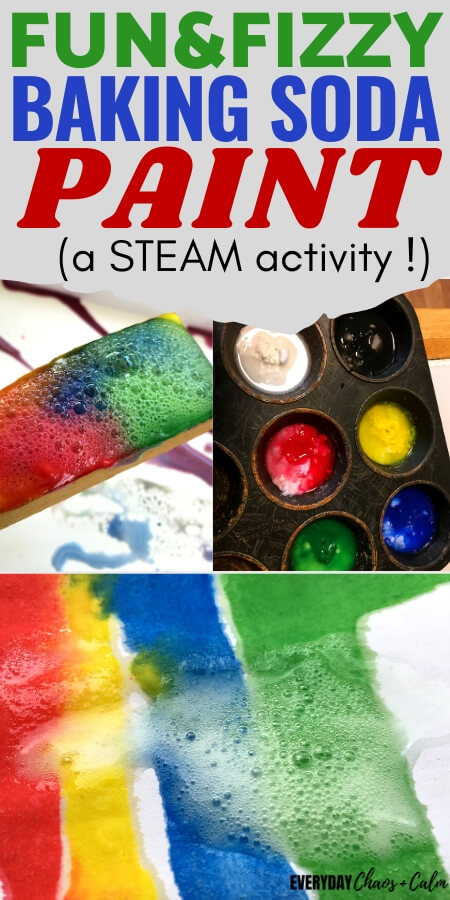
How to Make Baking Soda Paints
You only need 3 ingredients to make baking soda paints. Here’s what you’ll need:
- baking soda
- tempera paints (or water colors)
- water
That’s it! Super easy, right?
I used an old muffin pan, but you can use whatever container you wish to mix your paints.
You will also need the following supplies for this STEAM activity:
- paint brushes
- white vinegar
- an eyedropper or spray bottle
- paper (or various other mediums to paint on)
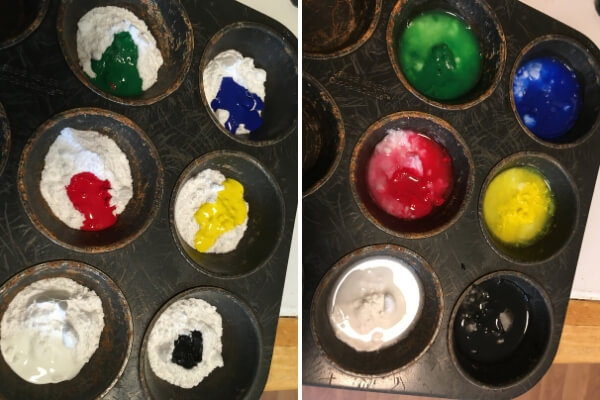
Here’s how to mix up the baking soda paint:
Place an overflowing tablespoon of baking soda in each muffin cup or container.
Add in a small amount of liquid tempera paint. I used about a teaspoon worth- just one good squirt out of the bottles. If you don’t have liquid tempera paint you can also use liquid watercolor or even just some food coloring.
Add a scant tablespoon of water to each cup and stir well.
The baking soda will settle out, so you’l likely have to stir with your paint brushes before painting as well.

Now it’s time to paint!
Since this activity can get a little messy, I’d suggest doing it outside. Or, if you are doing it indoors, be sure to do it over a tray or other protected surface.
Using paint brushes, paint on your paper just as you would any other paint. Encourage your kids to stir up the baking soda paints before they paint to make sure lots of baking soda makes it on their paper.
This is all about the process and not at all about the final product, so just let them explore painting with this new medium.
We painted rainbows, splatter painted, dripped goopy colored baking soda all over the paper, basically we just had fun making art.
We made quite a few pictures and then we moved on to step number 2!
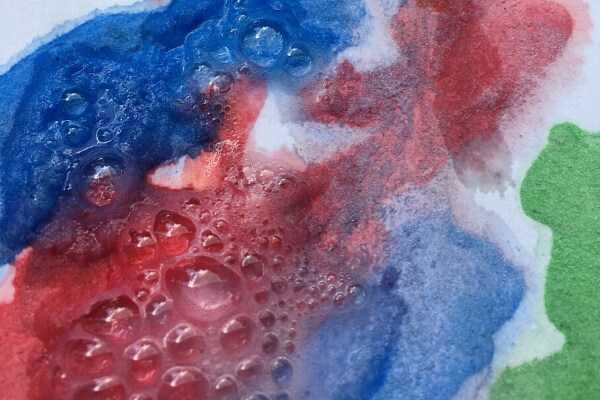
Next grab your vinegar. You have 2 options here:
- A small container of white vinegar and a dropper
- A spray bottle filled with vinegar, set on a mist setting
I love using a dropper for this activity because it lets the kids have more control over where the vinegar is applies.
Take your dropper and drip vinegar over your painting. Just like with other baking soda and vinegar experiments, the baking soda in the paints will react with the vinegar, causing bubbles and fizzing. The colors will also mix and bleed during the reaction.
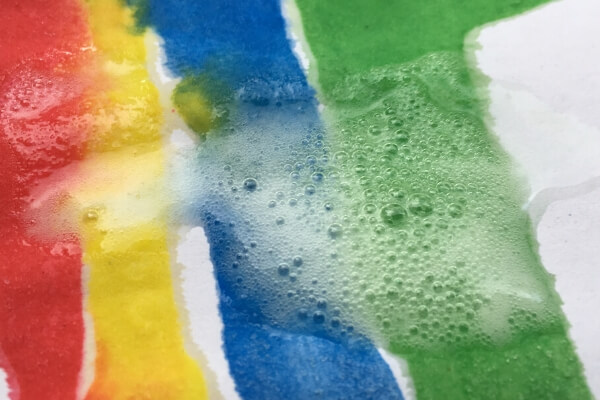
What to Paint with Baking Soda Paints
There’s a ton of options when it comes to painting with these baking soda paints. And I suggest giving creative freedom and allowing your kids to experiment with different paper and mediums to see how the paint reacts differently.
Here are some options of what to paint with baking soda paints:
- construction paper
- printer paper
- water color paper
- coffee filters
- wood
- plastic
- sidewalk or driveway
Basically just have fun exploring and seeing how the paint looks on each surface after using the vinegar on the paints.

Baking soda paints being used on a piece of wood and a coffee filter
Once you are done, hang the finished pieces out to dry. And be sure to come back to them after they are completely dry.
Have your kids observe the sparkly look of the dry paintings and have them experiment and see if the baking soda paints react differently when the vinegar is added after they paint has dried.
Baking soda paint dries sort of crumbly, so you may not want to display the artwork on the fridge, or you’ll end up with baking soda flakes all over the floor.
I like to this of this as more of a STEAM activity than an art project- where it’s more about the experience and process than it is creating a final piece of artwork.
Like most baking soda and vinegar activities, this one ended with vinegar and baking soda just being mixed all over the place! Including this baking soda paint eruption:
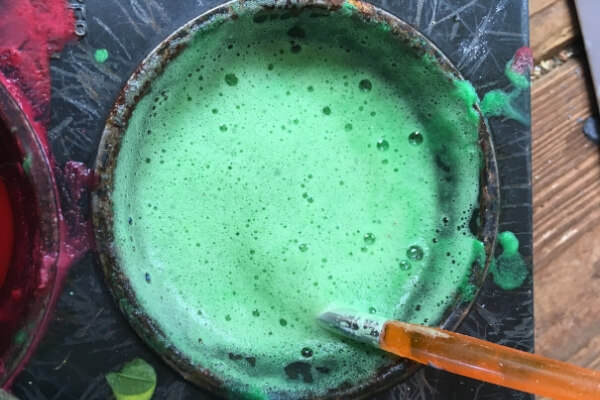
The kids also enjoyed painting with the froth and bubbles made from this mixture!
Looking for more Baking Soda and Vinegar Activities? Check out the activities below:
7 Baking Soda and Vinegar Activities for Kids!
More Activities You May Like:
Simple Acids and Bases Science Experiment to Do With Kids
Fun Chemical Reaction Experiment for Kids That Gives Off Heat!
Art Project for Kids: Rainbow Kandinsky Circles
Marbled Planet Craft: A Fun Way to Learn the Planets




great work